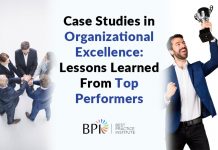The State of Integrated Talent Management
After more than a decade of “the war for talent” and the quest for “talent management,” some corporations are finally succeeding at integrating their talent management solutions. They are the companies that will dominate their industries during the next decade.
However, many (perhaps most) business leaders are still fuzzy about the distinction between HR and talent management, and have only a vague notion of what “integrated talent management” looks like. Why has it taken so long for many corporations to grasp concepts that have become essential in a rapidly changing global marketplace?
Perhaps it is because while talent management theory has been evolving during the past 15 years, so has the technology that now makes it possible to finally integrate talent management solutions in ways that could hardly be imagined in the 20th century.
It is hard to remember the not-so-distant day when computers were tied to flickering green screens and floppy disks and the World Wide Web did not exist. Today corporations can collect, crunch and communicate an endless stream of data across departments and across continents.
Corporations at the top of the charts will be those that use technology to fully integrate talent management across the board, thus maximizing the fulfillment of company objectives.
Fierce Competition for Workers
In 1997, Steven Hankin of McKinsey & Co. coined the term “the war for talent” to describe the fierce competition for talented workers in the modern business world. Among the many factors that have provoked that battle are the increased need for specialized knowledge workers and the baby boomers’ approaching retirement from the workforce.
But attracting talent is just the start. In 1998, David Watkins of Softscape coined the term “talent management” to describe the broader goals of developing and retaining workers. By 2003, the term “integrated talent management” had emerged, based on the belief that to find, train and keep the right workers with the right skills in an ever-changing world, every part of the corporation must participate in a fully integrated talent management strategy.
The good news is that thanks to modern computer technology and the development of many excellent talent management software solutions, it has never been easier for a corporation to achieve talent management integration.
The ITM Model
Many studies have proven that corporations with strong talent management are surpassing their rivals that take a more archaic HR approach. Successful companies pay attention to organizational strategy, business development, operations, and finances, but they have also provided a seat at the table for talent management alongside those traditional concerns.

There are countless details of successful talent management, but the following five points form the BPI Integrated Talent Management Model:
1.Total integration of HR functions: Including identification, selection, development and performance functions.
2.Complete transparency: Both on performance and rating methods.
3. Multiple checks and balances: Using a variety of assessment methods and ratings input, thus increasing the quality of the talent selection process, which in turn encourages employee trust in those who are selected.
4. Full accountability: “The Big A.” Accountability that is directly tied to compensation and promotion. Executives and managers held accountable in such areas as self-development, developing direct reports, and developing backups for their positions. Thus, every manager becomes an active participant in talent management.
5. Competencies: Tailored to the company’s culture and future direction. Successful companies are future-oriented.
Other features of integrated talent management include:
• Talent linked to business strategy.
• Talent linked to workforce planning for multiple futures scenarios.
• Talent evaluated based on performance, productivity and improved business results.
• A talent management mindset: Agile and open to change rather than hard-wired and rigid.
• Full automation of all aspects of the system, resulting in better talent and workforce decisions at a faster and more efficient rate.
Integrating the Data
Modern corporations collect and maintain a wealth of personnel data. However, at most corporations, the data exists in countless separate systems run by various departments at various locations. It is now possible to integrate all of that data and use HR analytics tools to manage talent in ways never before possible. Workforce analytics is one of the fundamental building blocks of successful talent management.
What are each department’s future needs? Which employees have skills that correlate to those needs? What percentage of the workforce is approaching retirement? The data exists to answer these and scores of other questions. Integrated talent management accesses that data to find the answers.
Some Success Stories
• Time Warner Cable: Janet Manzullo and Dave Ivester at Time Warner Cable have transformed talent management by integrating Brass Ring, Peoplesoft and Provisor on a closed system. Their onboarding tool is integrated as well, which includes the forms for drug screening, assessments and paperwork.
It is all automated. Integration has allowed for more productivity within the organization. Data is easily accessible and viewable in both the HR and Talent Management sections. Total integration took two years.
• Children Healthcare: Larry Mohl heads talent management integration at Atlanta’s Children Healthcare. Using Taleo, the company is now a fully integrated organization using Taleo’s modules for onboarding to succession planning.
Mohl says the organization has reaped significant intangible cost savings since eliminating multiple vendors. Savings in Information Technology have been achieved as well. The large data pools have helped boost recruitment and HR analytics. They are seeing the bigger picture more easily and proving what they are doing is working.
• Destination Hotels & Resorts: Robert Mellwig at Destination Hotels and Resorts has focused on three talent management areas: technology, process and leadership. He uses Oracle and Successfactors to align his talent management systems. All modules are on a cloud-based system. Oracle links their systems together.
• E.W. Scripps: E.W. Scripps looked at the bigger picture and found that a holistic long-term talent management approach is the most effective. They corporation uses Plateau for its talent management system, SkillSoft for its course library and training, and also Knowledge Fusion. Their cloud-based system is WorkLife, which the LMS and Talent Management suite feed back into it.
However, the above integrated talent management success stories are still rarities. For most corporations, even those that have been attempting talent management for years, fully integrated talent management solutions are yet to be achieved. Most corporations still maintain their personnel data on numerous systems and have not invested in the technology and software to integrate those data sources.
The successful corporation with a well-integrated talent management system will be able to do all of the functions mentioned above from a single IT platform. The data on that platform will be readily accessible to personnel throughout the company who need it, including:
• Managers and employees who are making crucial decisions regarding development plans, succession, identification of high-performing teams, and movement of key personnel.
• HR specialists who need information regarding recruitment objectives, benefit plans, engagement strategies, development programs, replacement table information, and performance and productivity goals.
• Senior management with actionable information regarding the full capabilities of its present workforce to execute corporate objectives.
• Senior managers, who need a realistic picture of what new talent it will need to execute corporate objectives outside the skill sets and capabilities of existing staff.
Most corporations do not yet possess that level of integrated talent management. Those that do are quickly moving out in front.
Integrated talent management is a reality, and today it is a possibility for every corporation. It is an idea whose time has finally come.
——————————————————–
Louis Carter, founder and CEO of Best Practice Institute, Palm Beach Gardens, FL, is a highly regarded authority on best practices in learning, talent, leadership development and change. He is author or co-author of Leading the Global Workforce, Best Practices in Leadership Development and Organizational Change, The Change Champion’s Fieldguide, Best Practices in Leading the Global Workforce, Best Practices in Organization Development and Change, The Toolkit for Developing Leaders, Linkage, Inc.’s Best Practices in Knowledge Management & Organizational Learning Handbook, and Linkage, Inc.’s Best Practices in Leadership Development Handbook.
Patrick Carmichael is Vice President of Senior Executive Boards at Best Practice Institute. He is responsible for the management, research, coaching, consultation and facilitation of senior executive peer groups among Fortune 500 organizations. Patrick has more than 35 years experience in executive and organizational development, international training and cross-cultural development issues. Carmichael is a former member of Saudi Aramco’s Employee Relations and Training Management team.










